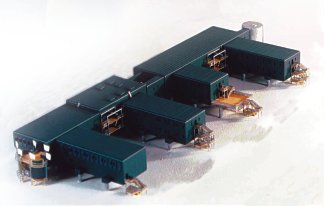Developing the South Pole
No need to worry about traffic jams, but caution signs are cropping up at the South Pole as construction begins to overhaul aging research facilities. After 10 years of planning, workers this austral summer are building the first portion of an elevated station to stand over the dome of the Amundsen-Scott South Pole Station, the National Science Foundation (NSF) announced Oct. 17.
The new station, scheduled for a 2005 completion, will house 200 people, says Peter West of NSF. For the past 30 years, the older dome, originally built to accommodate 33 men, has been the core support structure for men and women scientists working in the South Pole.

Construction begins this year on the replacement for the Amundsen-
Scott South Pole Station. Pictured is a model of the new station. NSF
